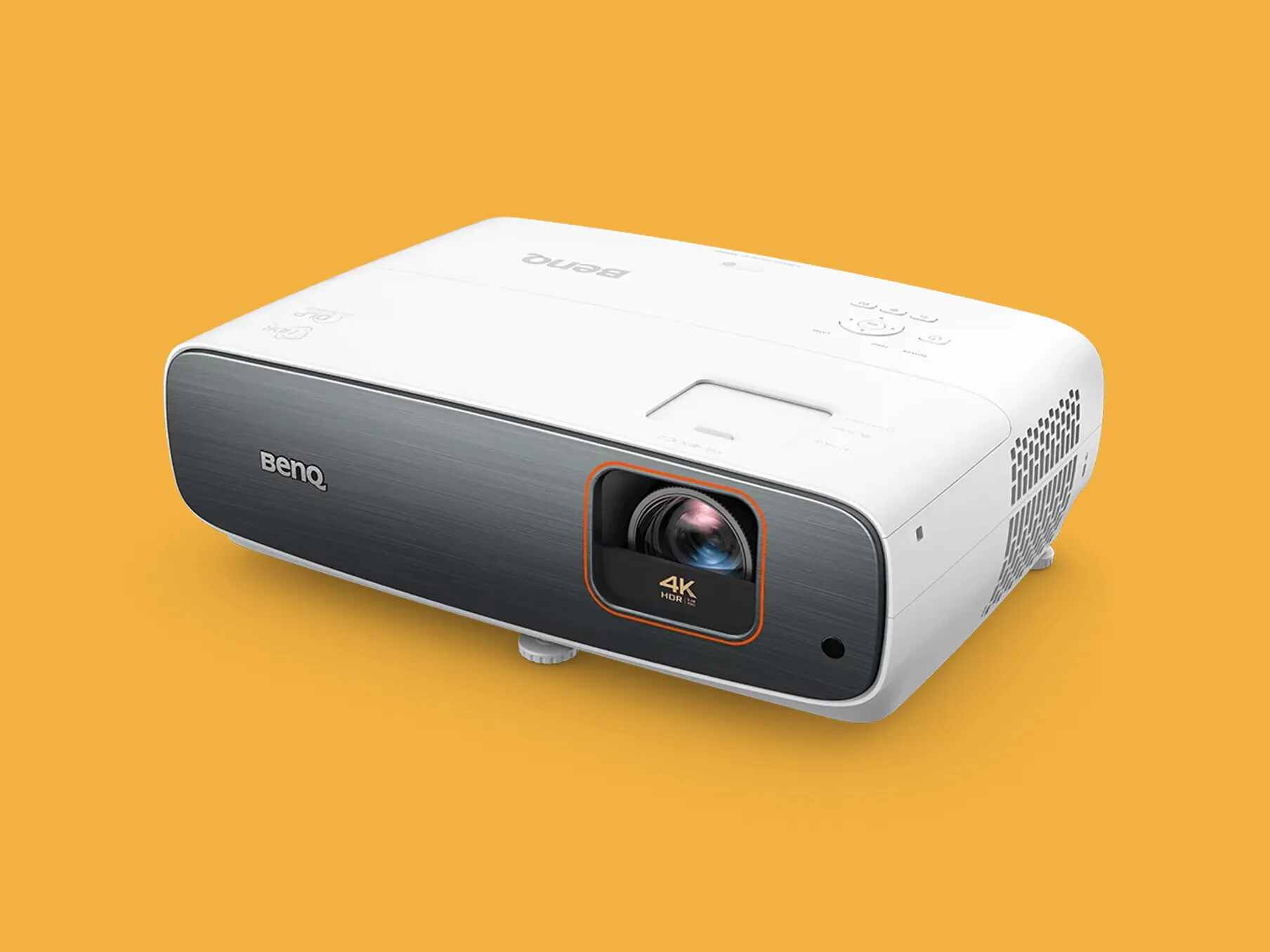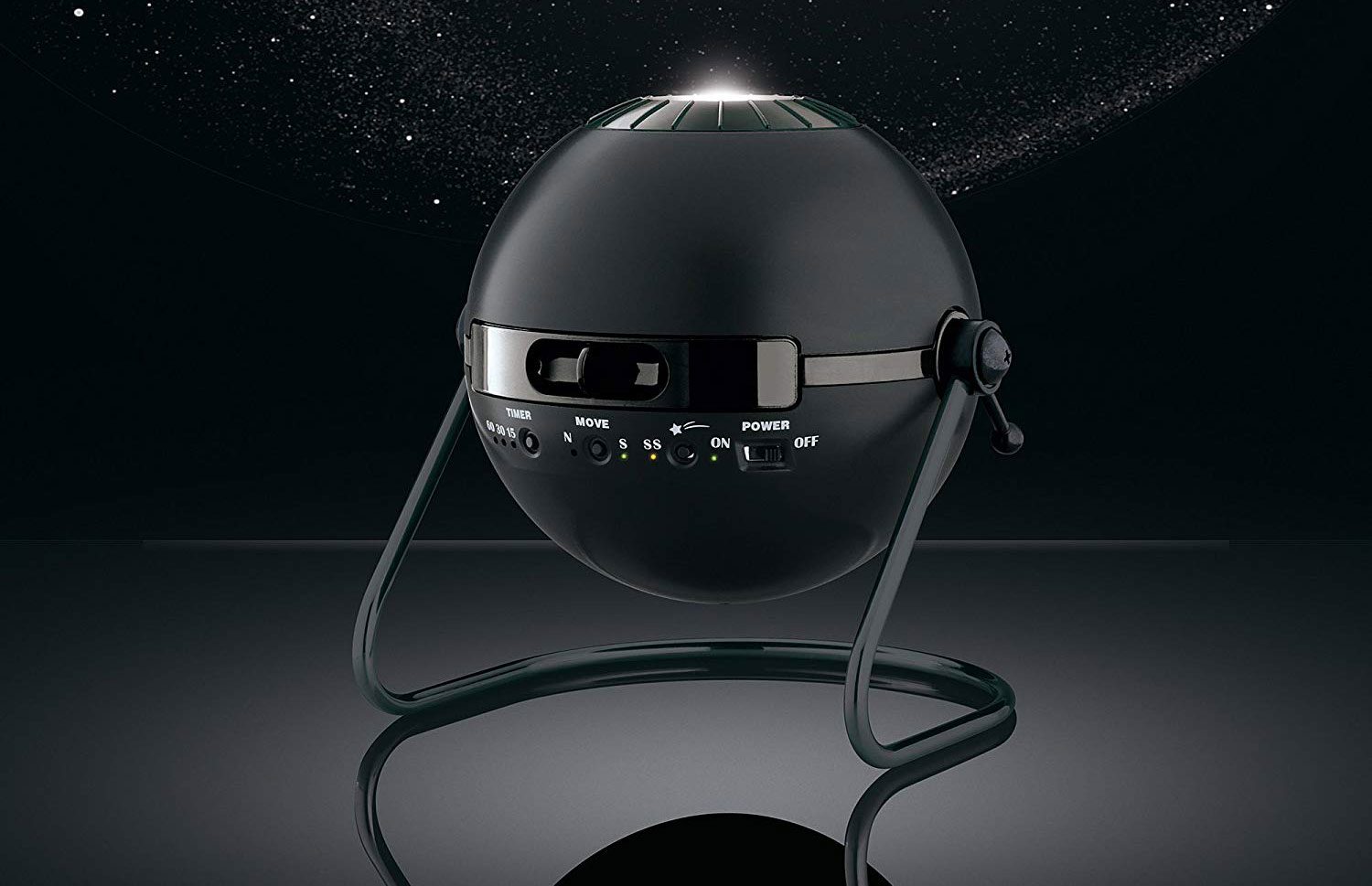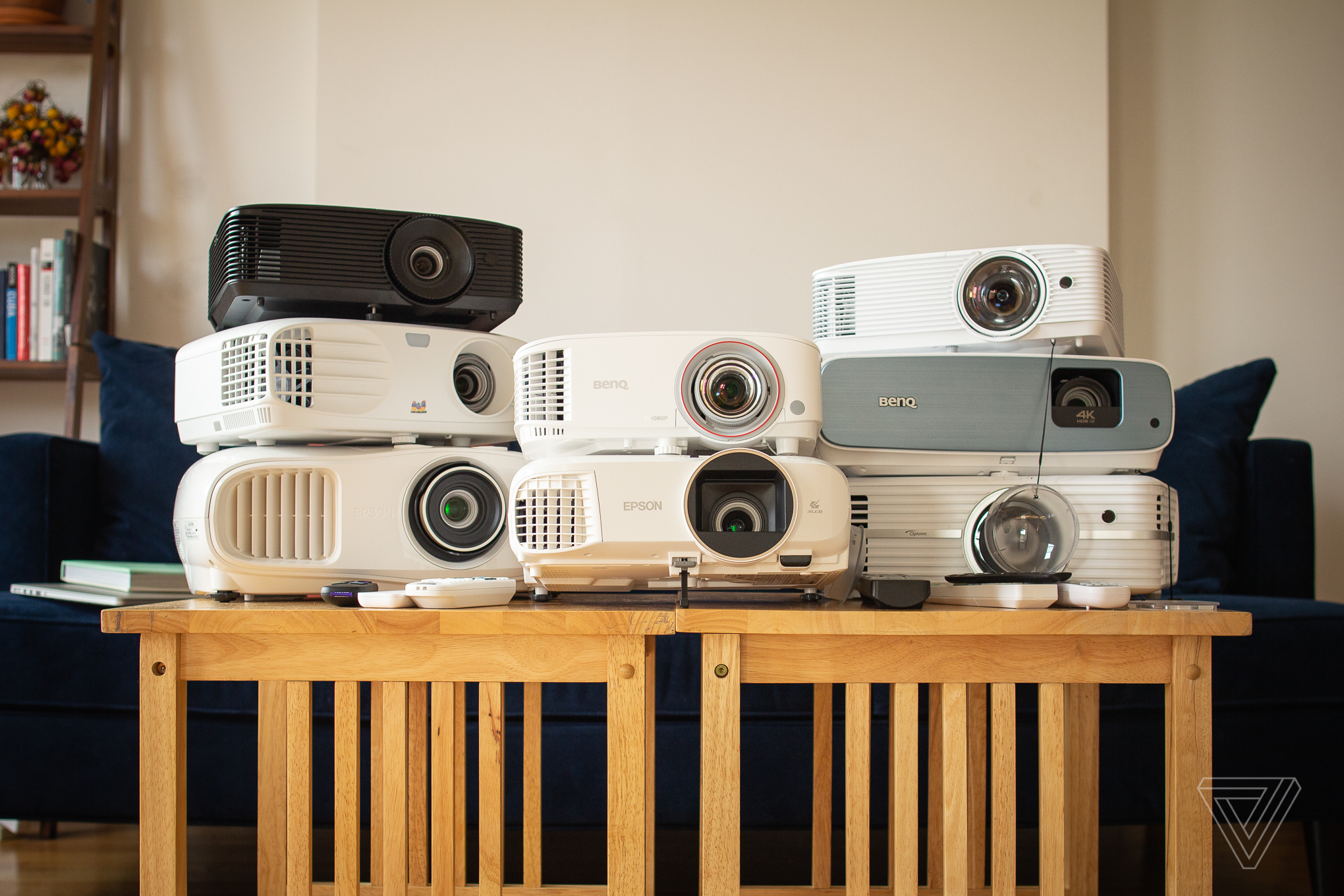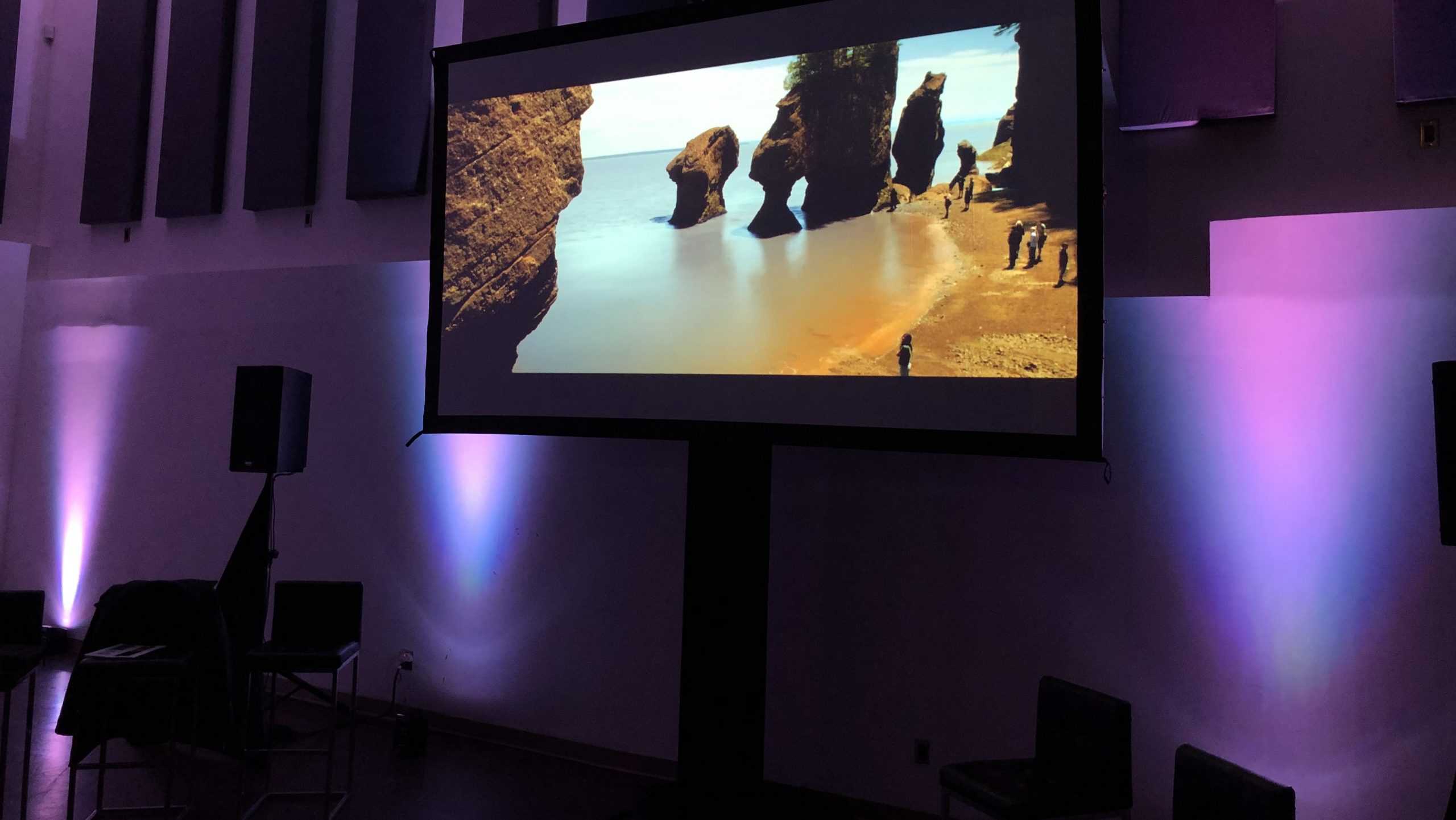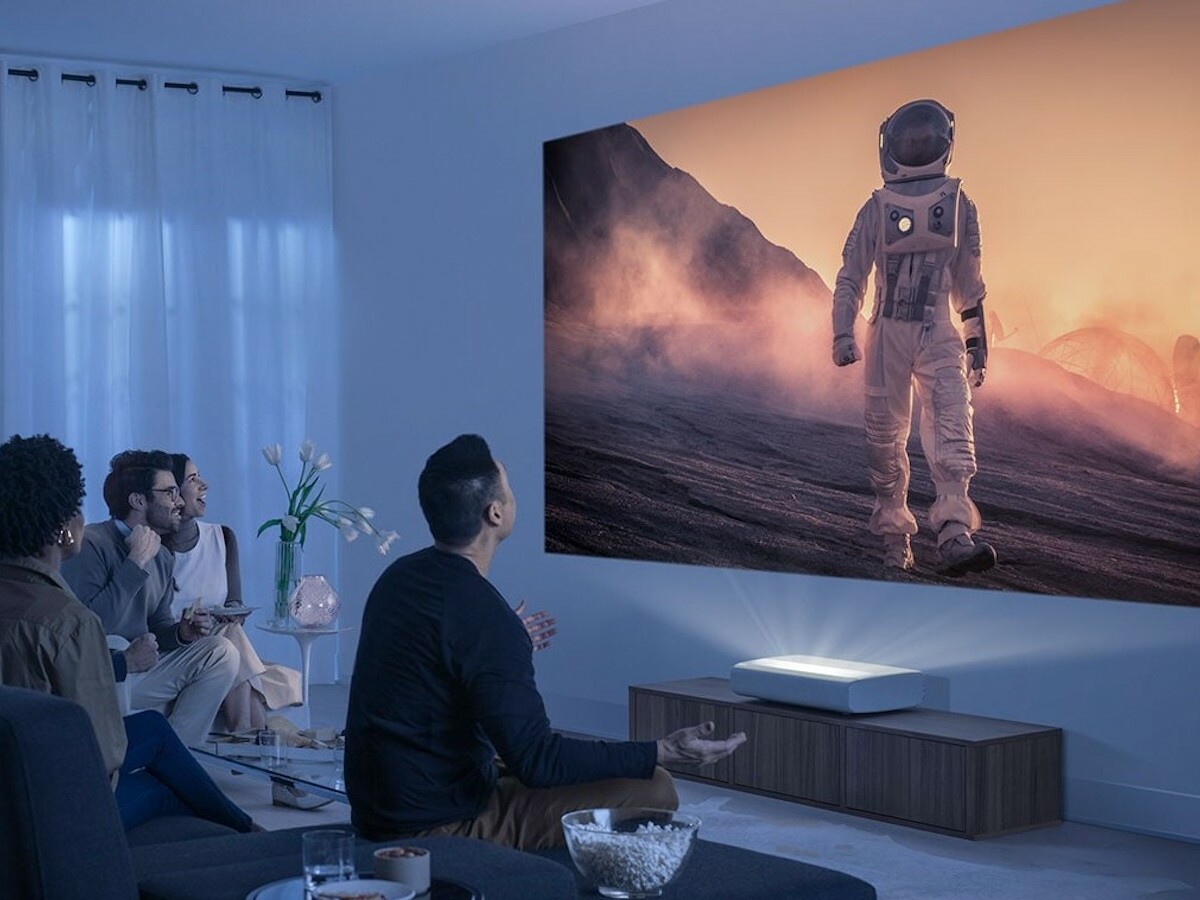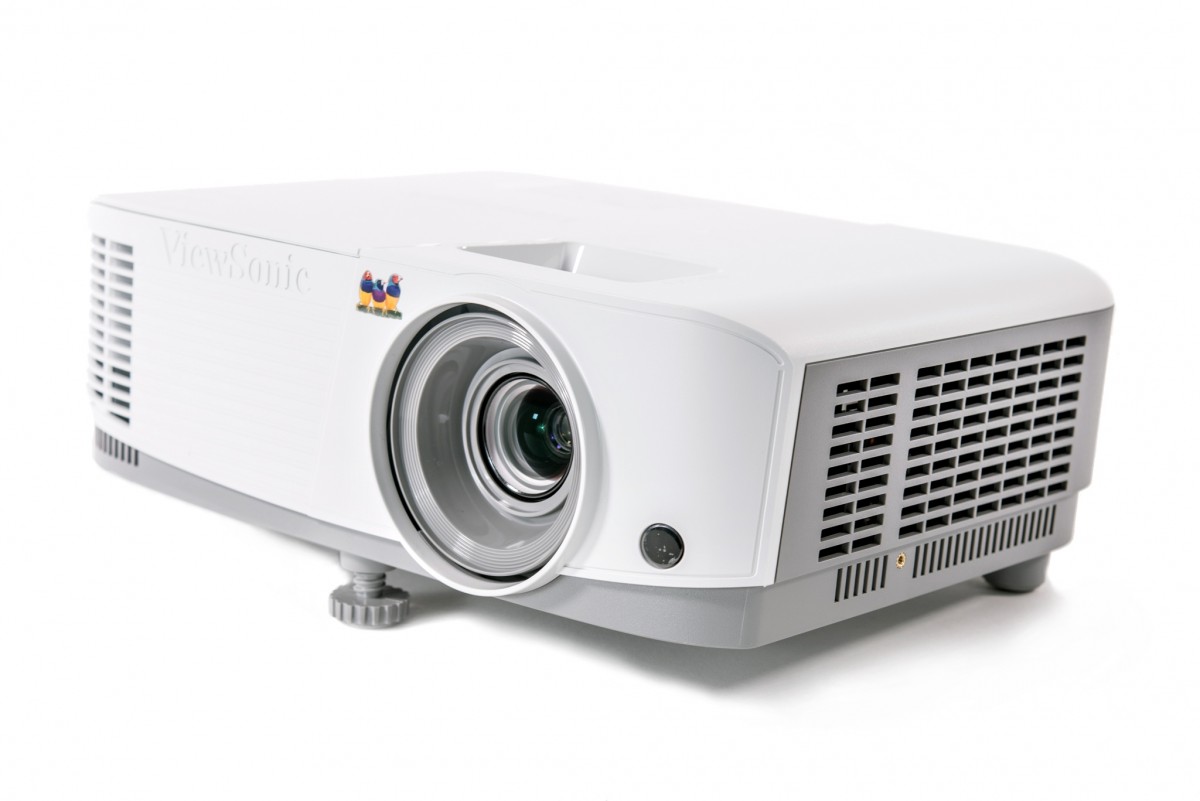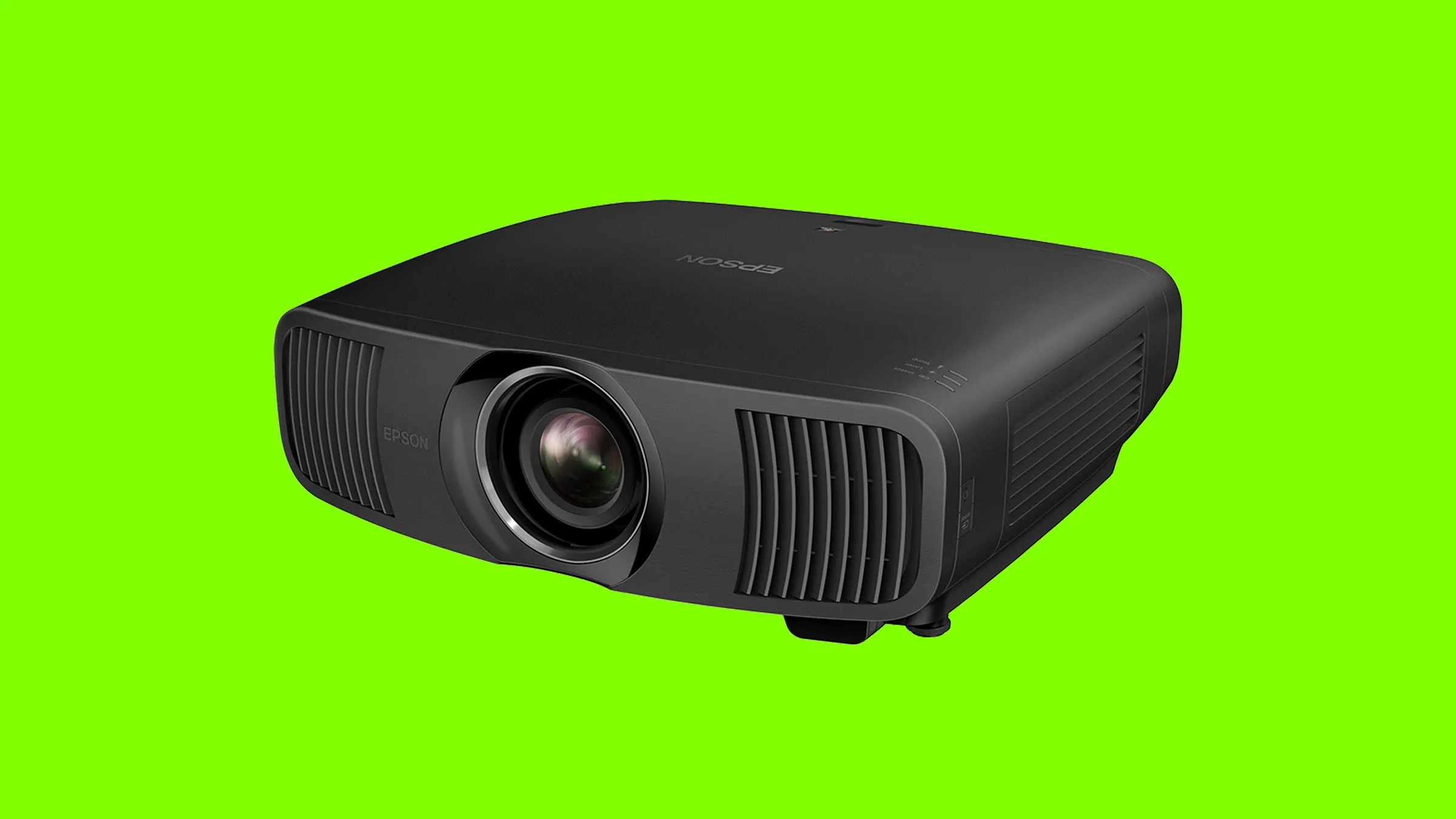Introduction
The longevity of a projector is a significant concern for users, especially those who heavily rely on this device for presentations, movie nights, or gaming. Understanding how long a projector can stay on is crucial for proper usage and maintenance. Several factors can affect the lifespan of a projector, including the lamp life, cooling mechanisms, power-saving features, ambient temperature, and usage in high altitude environments. By understanding these factors and implementing proper maintenance practices, users can prolong the lifespan of their projectors and avoid potential issues caused by overheating.
Projectors have become an integral part of our multimedia experiences. Whether it’s for business presentations, educational purposes, or simply enjoying entertainment at home, projectors have proven to be versatile and convenient devices. However, these devices can generate a significant amount of heat, which can affect their overall performance and longevity if not properly managed.
One of the key factors that determine how long a projector can stay on is the lamp life. Projector lamps are designed to emit bright light, but they have a limited lifespan. On average, projector lamps can last anywhere from 2,000 to 5,000 hours, depending on the quality of the lamp and the usage patterns. It is crucial to keep track of the lamp usage and replace it when nearing the end of its lifespan to ensure optimal image quality and prevent potential damage to the projector itself.
Cooling mechanisms play a vital role in maintaining the projector’s temperature and preventing overheating. Most projectors are equipped with fans and heat sinks that help dissipate heat generated by the lamp and other components. Proper airflow is essential to keep the internal components cool and functioning correctly. It is important to ensure that the projector is placed in a well-ventilated area, away from any obstructions that can hinder the airflow. Regularly cleaning the projector’s air filters is also crucial to prevent dust buildup, which can impede proper cooling.
Many modern projectors are equipped with power-saving features that help extend their lifespan. These features automatically dim the lamp or put the projector into standby mode when not in use, reducing energy consumption and heat generation. It is advisable to take advantage of these features to maximize the projector’s lifespan and conserve energy.
Factors that Affect Projector Lifespan
The lifespan of a projector can be influenced by various factors. Understanding these factors is crucial in maintaining the optimal performance and longevity of your projector. By being aware of these aspects, you can take appropriate measures to prolong the lifespan of your projector. Let’s explore the key factors that can affect the lifespan of a projector.
The primary factor that impacts a projector’s lifespan is the lamp life. Projector lamps have a finite lifespan, and their longevity depends on several factors, including the quality of the lamp and the usage patterns. On average, a projector lamp can last between 2,000 and 5,000 hours. However, this can vary depending on how frequently the projector is used and the brightness settings. It is essential to keep track of the lamp usage and replace it when it nears the end of its lifespan to maintain optimal image quality.
The cooling mechanisms in a projector also play a significant role in its lifespan. Projectors generate a considerable amount of heat, especially the lamp and other internal components. To manage the heat effectively, most projectors are equipped with fans and heat sinks. These components help dissipate the heat and prevent overheating. It is crucial to ensure proper airflow around the projector by keeping it in a well-ventilated area. Regularly cleaning the air filters is also essential to prevent dust accumulation, which can hinder cooling and lead to overheating.
Power-saving features are another factor that can impact a projector’s lifespan. Many projectors come with energy-saving options that automatically dim the lamp or put the projector into standby mode when it is not in use. These features not only reduce power consumption but also help in prolonging the lamp life and preventing unnecessary heat generation. It is advisable to utilize these power-saving features to maximize the lifespan of your projector.
The ambient temperature of the environment where the projector is used is also an important factor to consider. Extreme temperatures, whether too hot or too cold, can impact the performance and lifespan of the projector. High temperatures can cause the internal components to overheat, while low temperatures can affect the lamp’s functionality. It is ideal to operate the projector in an environment with a moderate temperature range and avoid exposing it to extreme temperature conditions.
Additionally, using a projector in high altitude environments can impact its performance and lifespan. In high altitudes, air density decreases, which can affect the cooling efficiency of the projector. It is advisable to check the manufacturer’s specifications and recommendations regarding altitude limitations for your specific projector model. Taking necessary precautions and ensuring proper ventilation becomes even more crucial when using a projector at high altitudes.
Lamp Life
The lamp life of a projector refers to the duration that the projector lamp can operate before it needs replacement. It is a crucial factor in determining the overall lifespan of a projector. Understanding the lamp life and taking appropriate measures can help you maximize the usage and efficiency of your projector.
On average, projector lamps have a lifespan ranging from 2,000 to 5,000 hours, but this can vary depending on several factors. The quality of the lamp itself plays a significant role in determining its longevity. Higher-quality lamps tend to last longer compared to cheaper alternatives. It is recommended to invest in lamps from reputable manufacturers to ensure optimal performance and longevity.
The usage patterns also influence the lamp life. If the projector is used for extended periods without breaks, the lamp can deteriorate faster. It is advisable to give the projector some rest between usage sessions to allow the lamp to cool down. Additionally, adjusting the brightness settings can help extend the lamp life. Running the projector at lower brightness levels reduces the stress on the lamp and may contribute to a longer lifespan.
To maximize the lamp life, it is essential to keep track of its usage. Most projectors have a lamp hour meter that displays the lamp usage time. Regularly monitoring the lamp hours will give you an idea of when it will require replacement. It is recommended to replace the lamp once it reaches its maximum lifespan or when the image quality starts to deteriorate. Operating the projector with a worn-out lamp can result in poor image quality, color distortion, or even lamp failure, which may lead to costly repairs.
When replacing the lamp, it is crucial to follow the manufacturer’s instructions and use the recommended lamp model compatible with your projector. Using unauthorized or counterfeit lamps can not only affect the image quality but also potentially damage the projector. Furthermore, proper handling and installation of the new lamp are important factors to consider. Avoid touching the lamp surface directly, as the oils from your fingers can cause hot spots and reduce the lamp’s lifespan. Always follow the guidelines provided by the manufacturer for safe and efficient lamp replacement.
By understanding the lamp life and implementing proper usage and replacement practices, you can ensure that your projector operates at its best performance and extends its overall lifespan. Regularly checking the lamp usage, adjusting brightness settings, and using high-quality lamps will contribute to a longer-lasting, reliable projector that continues to deliver exceptional image quality.
Cooling Mechanisms
Cooling mechanisms play a critical role in maintaining the optimal temperature of a projector and preventing overheating. Projectors generate a significant amount of heat, especially from the lamp and other internal components. Without proper cooling, the excessive heat can affect the projector’s performance, decrease its lifespan, and even lead to irreversible damage. Understanding the cooling mechanisms and implementing proper practices will help ensure the longevity and reliable operation of your projector.
Most projectors are equipped with built-in fans and heat sinks to dissipate the heat generated during operation. The fans draw in cool air and expel hot air, promoting airflow and heat exchange. Heat sinks, usually made of metal, provide a large surface area for heat dissipation. These cooling mechanisms work together to maintain a stable operating temperature and prevent the internal components from overheating.
To ensure proper cooling, it is essential to keep the projector in a well-ventilated area. Avoid placing it in enclosed spaces or blocking the airflow around the projector. Adequate space should be provided for the fans to draw in cool air and expel hot air efficiently. Additionally, maintaining a clean environment around the projector is crucial to prevent dust accumulation, which can impede the cooling process. Regularly clean the projector’s air filters to remove any dust or debris that may block the airflow.
Another important aspect of cooling is the proper placement of the projector. Avoid placing it near heat sources or in direct sunlight, as this can increase the temperature around the projector and lead to overheating. Furthermore, operating the projector at higher altitudes can affect its cooling efficiency. At higher altitudes, air density decreases, which reduces the effectiveness of cooling mechanisms. If you plan to use the projector at high altitudes, ensure proper ventilation and follow the manufacturer’s recommendations.
In addition to proper placement and ventilation, it is advisable to adhere to usage guidelines to prevent excessive heat generation. Avoid running the projector for prolonged periods without breaks, as this can put excessive strain on the cooling mechanisms. If possible, reduce the brightness level of the lamp, as lower brightness settings generate less heat. Many projectors also come with power-saving features that automatically dim the lamp or put the projector into standby mode when not in use, further reducing heat generation.
Regular maintenance is essential to ensure the effectiveness of the cooling mechanisms. In addition to cleaning the air filters, periodically check the fans and heat sinks for any dust or debris buildup. Clean them if necessary to optimize cooling performance. If you notice any unusual noises or a significant decrease in cooling efficiency, it is advisable to contact the manufacturer or a professional technician for further assistance.
By understanding and implementing proper cooling practices, you can ensure that your projector operates within safe temperature limits and prolong its lifespan. Adequate ventilation, clean environment, proper placement, and adherence to recommended usage and maintenance practices will contribute to a cooler, more reliable projector that delivers consistent performance and longevity.
Power Saving Features
Power saving features are an important aspect of projectors that not only help conserve energy but also contribute to prolonging the device’s lifespan. These features are designed to reduce power consumption and minimize heat generation, ultimately enhancing the overall efficiency and longevity of the projector. Understanding and utilizing the power-saving capabilities of your projector can prove beneficial in both environmental and maintenance aspects.
One common power-saving feature found in projectors is automatic lamp dimming. This feature adjusts the brightness of the lamp based on the content being displayed. During dark scenes or when the projector is not in active use, the lamp is automatically dimmed to a lower brightness level, reducing energy consumption and minimizing heat generation. This not only helps save energy but also extends the lamp life by reducing its workload and preventing unnecessary wear and tear.
Another power-saving feature is standby mode. When the projector is not in active use for a certain period of time, it will automatically enter standby mode. In this mode, the projector consumes minimal power and cools down, preserving energy and preventing overheating. Standby mode is particularly useful in scenarios where the projector is frequently used for short durations with intermittent breaks. It eliminates the need to manually power off and on the projector, providing convenience while simultaneously conserving energy.
Some projectors also come with auto power-off functionality. This feature automatically turns off the projector after a specified period of inactivity. If the projector is accidentally left on, it will power down to prevent unnecessary usage and power consumption. Auto power-off is an effective way to avoid excessive lamp usage and prolong the projector’s lifespan.
To take advantage of these power-saving features, ensure that they are enabled in the projector’s settings. Each model may have slightly different options and configurations, so refer to the user manual or manufacturer’s guidelines for specific instructions on how to activate and customize these features. Additionally, familiarize yourself with the projector’s power management settings to adjust the duration of inactivity before the lamp dims or the projector enters standby mode. This allows you to personalize the power-saving settings based on your usage patterns and preferences.
It is important to note that while power-saving features contribute to energy conservation and prolonging the projector’s lifespan, they should not compromise the viewing experience. Ensure that the brightness and image quality settings are still suitable for the intended use. If necessary, make manual adjustments to ensure optimal visibility and clarity while benefiting from the energy-saving capabilities of the projector.
By utilizing the power-saving features of your projector, you not only reduce energy consumption and contribute to a greener environment but also extend the lifespan of the device. The automatic lamp dimming, standby mode, and auto power-off features help conserve energy, minimize heat generation, and reduce wear and tear on the projector’s components. Take advantage of these features to maximize the efficiency and longevity of your projector while enjoying a seamless viewing experience.
Ambient Temperature
The ambient temperature of the environment in which a projector is used plays a crucial role in its performance and lifespan. Extreme temperatures, whether too high or too low, can negatively impact the projector’s functionality and longevity. Understanding the effects of ambient temperature and taking appropriate measures can help ensure optimal operation and prolong the lifespan of your projector.
High ambient temperatures can lead to overheating of the projector’s internal components. This includes the lamp, circuitry, and cooling mechanisms. When exposed to excessive heat, these components can degrade faster, leading to reduced performance and potential damage. It is important to avoid placing the projector near heat sources such as radiators, heating vents, or direct sunlight. Ensure there is adequate ventilation around the projector, allowing heat to dissipate properly.
On the other hand, low ambient temperatures can affect the functionality of the projector’s lamp. Cold temperatures can cause the lamp to operate inefficiently or even stop functioning altogether. It is advisable to warm up the projector in such cases by keeping it in a warmer environment before turning it on. Additionally, some projectors may have a feature that allows you to adjust the lamp’s power level to compensate for colder temperatures.
Operating the projector within a moderate temperature range is recommended. The ideal ambient temperature for most projectors is between 41°F (5°C) and 95°F (35°C). However, it’s important to note that different projector models may have specific temperature recommendations. Consult the manufacturer’s guidelines or user manual for the recommended temperature range for your specific projector.
If you are using the projector outdoors or in a non-temperature-controlled environment, it becomes even more important to consider the ambient temperature. Extreme weather conditions such as hot summers or cold winters can pose challenges to the projector’s functionality. In such cases, providing additional protection such as shading or using a projector enclosure can help mitigate the impact of the ambient temperature.
Proper maintenance and regular inspection of the projector can also help in managing temperature-related issues. Ensure that the projector’s air filters are clean and free from dust or debris, as accumulated dust can hinder the cooling mechanisms. Regularly inspect the fans and heat sinks for any signs of obstructions, and clean them if necessary. If you notice any unusual sounds, overheating indicators, or performance issues, it’s recommended to consult the manufacturer or a qualified technician for further assistance.
By being mindful of the ambient temperature of the environment in which your projector operates, you can ensure reliable performance and prolong its lifespan. Avoid exposing the projector to extreme heat or cold, maintain proper ventilation, and follow the manufacturer’s guidelines regarding temperature recommendations. Taking these precautions will help create an optimal operating environment, ensuring consistent performance and longevity for your projector.
Using Projector in High Altitude
Using a projector in high altitude environments requires special consideration, as the decreased air density can affect the projector’s performance and lifespan. It is important to understand the potential challenges associated with high altitudes and implement proper measures to ensure optimal operation and longevity of your projector.
In high altitude areas, the air density decreases, which affects the cooling efficiency of the projector. The reduced air density makes it more difficult for the cooling mechanisms, such as fans and heat sinks, to dissipate heat effectively. This can lead to increased internal temperatures and potential overheating of the projector’s components. It is crucial to be aware of these effects and take necessary precautions.
When using a projector in high altitude environments, one of the most important measures is to ensure proper ventilation. Adequate airflow is essential for maintaining an optimal temperature and preventing excessive heat buildup. Make sure that the projector is placed in a well-ventilated area, away from any obstructions that may hinder the airflow. Additionally, checking and cleaning the projector’s air filters regularly is crucial to prevent dust accumulation, which can further impede cooling performance.
It is also recommended to consult the manufacturer’s guidelines for altitude limitations specific to your projector model. Different projectors have varying altitude thresholds beyond which their normal functionality can be affected. If you plan to operate the projector at altitudes above the manufacturer’s recommended limit, take extra precautions to ensure proper ventilation and cooling.
In some cases, projectors designed for high altitude use may be available. These projectors are specifically engineered to perform optimally in low air density environments. They have enhanced cooling mechanisms and other features to cope with the challenges posed by high altitudes. If you anticipate frequent usage in high altitude areas, consider investing in a projector designed for such environments to ensure long-lasting performance and minimize the risks associated with overheating.
It is important to note that using a projector in high altitude environments may also have an impact on the lamp life. Due to the decreased air density, the cooling mechanisms may work harder to maintain the optimal temperature, which can result in higher stress on the lamp. It is advisable to monitor the lamp usage and follow the manufacturer’s recommendations for lamp replacement intervals to ensure optimal performance and longevity.
By understanding the challenges posed by high altitude environments and implementing proper ventilation measures, you can ensure that your projector operates within safe temperature limits and prolong its lifespan. Take the necessary precautions, such as ensuring proper ventilation and considering projectors specifically designed for high altitude use, to maintain reliable performance and prevent potential overheating issues.
Projector Maintenance
Proper maintenance is essential to ensure the longevity and optimal performance of your projector. Regular maintenance practices can help prevent issues, such as overheating, image quality degradation, and other performance issues. By following a few simple maintenance steps, you can prolong the lifespan of your projector and ensure consistent, high-quality projection.
One of the most important maintenance tasks is to regularly clean the projector’s air filters. Air filters prevent dust and debris from entering the internal components, such as the lamp and cooling mechanisms. Over time, these filters can become clogged, hindering proper airflow and affecting cooling performance. Regularly check the manufacturer’s guidelines on how often to clean the air filters, and ensure that you clean them accordingly. Depending on the usage environment, cleaning the filters every few months or when necessary is generally recommended.
Cleaning the lens is another essential maintenance practice. Dust, fingerprints, and other particles can accumulate on the lens, affecting image clarity and brightness. Use a soft, lint-free cloth or lens cleaning solution recommended by the manufacturer to gently clean the lens. Avoid using harsh chemicals or abrasive materials, as they can damage the lens surface. Regularly inspect the lens for any dust or smudges and clean it as needed to ensure optimal image quality.
In addition to cleaning, it is important to periodically inspect the projector for any signs of wear or damage. Check the fans and heat sinks for any obstructions or dust buildup, as it can impact cooling performance. If you notice any unusual noises, overheating indicators, or performance issues, it is advisable to consult the manufacturer or a qualified technician for further assistance.
Proper storage is also crucial for maintaining the projector’s condition when not in use. If you need to store the projector for an extended period, ensure that it is kept in a cool, dry environment. Use the provided projector case or cover to protect it from dust and accidental damage. Before storing the projector, allow it to cool down completely to avoid any potential condensation inside.
Furthermore, it is important to follow the manufacturer’s guidelines for lamp replacement. Projector lamps have a finite lifespan and will eventually need replacement. Depending on the usage patterns and the model, a lamp can last between 2,000 and 5,000 hours. Monitor the lamp usage through the projector’s built-in hour meter or other tracking methods provided by the manufacturer. Once the lamp reaches its recommended lifespan or starts displaying signs of deterioration, such as diminished brightness or color accuracy, replace it promptly to maintain optimal image quality and prevent potential damage to the projector.
By implementing regular maintenance practices, you can ensure that your projector operates at its best performance and prolong its lifespan. Regularly cleaning the air filters and lens, inspecting the projector for wear or damage, proper storage when not in use, and following lamp replacement guidelines are key maintenance tasks. By taking care of your projector, you can enjoy long-lasting, reliable projection and an enhanced viewing experience.
Signs of Overheating
Overheating is a common issue that can affect the performance and lifespan of a projector. It is important to be aware of the signs of overheating to address the problem promptly and prevent potential damage. By recognizing these signs, you can take appropriate measures to ensure the proper functioning and longevity of your projector.
One of the most noticeable signs of overheating is an automatic shutdown or sudden power-off of the projector. When the internal temperature of the projector reaches a certain threshold, it activates a safety mechanism to protect the components from further damage. If your projector frequently shuts down or turns off during usage, it may be a sign of overheating.
Another indicator of overheating is the presence of unusual noises coming from the projector. Overheating can cause the cooling mechanisms, such as fans and heat sinks, to work harder and generate more noise. If you notice loud or irregular noises that are not typical of your projector’s operation, it may be an indication of overheating.
Diminished image quality can be another sign of overheating. When the projector’s internal components overheat, it can affect the image processing and display capabilities. You may notice distorted colors, image flickering, or reduced brightness. If the image quality deteriorates after the projector has been running for a while, it is advisable to check for overheating.
Excessive heat radiating from the projector itself can be a physical indicator of overheating. If you feel excessive heat coming from the projector’s ventilation ports or casing, it may suggest that the internal components are not cooling properly. However, use caution when checking for heat as projectors can become hot even under normal operating conditions. If the heat feels significantly higher than usual or becomes uncomfortable to touch, it could indicate overheating.
Unstable or unpredictable operation can also be attributed to overheating. If the projector behaves erratically, such as suddenly freezing, lagging, or responding slowly to inputs, it might be a result of high internal temperature affecting the device’s performance. In such cases, it is advisable to power off the projector, allow it to cool down, and check for other signs of overheating before attempting to use it again.
If you notice any of these signs indicating potential overheating, it is important to address the issue promptly. Start by turning off the projector and allowing it to cool down. Check the ventilation ports and clean any dust or debris that may be obstructing airflow. Ensure that the projector is placed in a well-ventilated area and that the air filters are clean. If the problem persists, it is recommended to consult the manufacturer or a qualified technician for further assistance.
By being vigilant and recognizing the signs of overheating, you can take proactive steps to prevent potential damage to your projector. Regular maintenance, proper ventilation, and ensuring the projector is operated within recommended temperature limits will help maintain optimal performance and extend the lifespan of your projector.
Conclusion
Understanding the factors that affect projector lifespan and implementing proper maintenance practices are essential for maximizing the performance and longevity of your projector. Factors such as lamp life, cooling mechanisms, power-saving features, ambient temperature, and high-altitude usage all play critical roles in determining a projector’s lifespan.
Regularly monitoring and replacing the projector lamp when necessary ensures optimal image quality, while properly maintaining the cooling mechanisms, such as fans and heat sinks, helps prevent overheating. Utilizing power-saving features, such as automatic lamp dimming and standby mode, not only conserves energy but also minimizes heat generation. Paying attention to the ambient temperature and providing proper ventilation ensures a stable operating environment for the projector.
In high altitude environments, additional precautions are necessary to maintain proper cooling due to decreased air density. Following the manufacturer’s recommendations for altitude limitations and utilizing projectors designed for high altitude use can help mitigate potential issues.
Regular maintenance, including cleaning the air filters and lens, inspecting for wear or damage, and proper storage, is crucial for optimal performance and longevity. Recognizing signs of overheating, such as automatic shutdowns, unusual noises, diminished image quality, excessive heat, and unstable operation, allows for prompt action and prevention of potential damage.
By implementing these practices and measures, you can ensure that your projector operates at its best performance and lasts for an extended period. Regular maintenance and proper usage not only enhance the projector’s lifespan but also improve the overall viewing experience. Remember to consult the manufacturer’s guidelines and seek professional assistance whenever necessary for any specific maintenance concerns or issues.
Taking care of your projector and addressing potential problems proactively will help you avoid costly repairs or premature replacement of the device. With proper maintenance and consideration of the factors discussed, you can enjoy reliable and high-quality projection for years to come.







